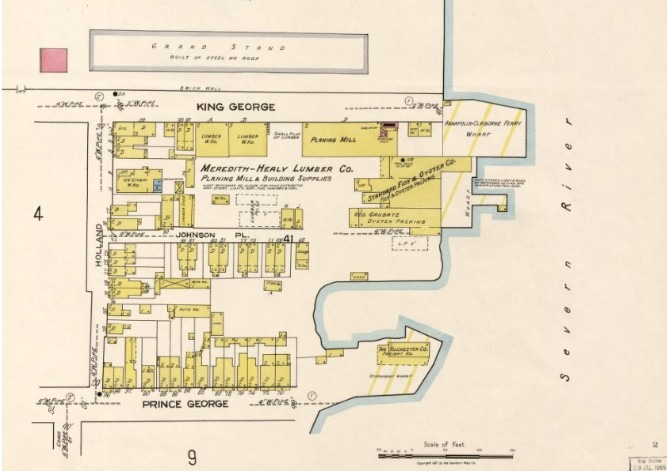On June 19, 1919– One hundred and six years ago this week, the 106 ft. long steamboat Emerson C. Harrington began offering regular ferry service across the Chesapeake Bay for vehicles. “Old Harrington” as she came to be known, would depart from the Annapolis- Claiborne Ferry Wharf at the foot of King George Street twice a day, and run across the Bay to the village of Claiborne, just north of St Michaels, a trip that took about an hour and 20 minutes. While small ferries for people, horses, and cargo had been part of the maritime commerce on the Chesapeake and its rivers since the colonial era, the growth in car ownership and an expanding national highway system in the early 20th century created a new demand for crossing the Bay with vehicles. The ferry not only connected the people of the western and eastern shores, but also connected their markets, goods, families, institutions, and ideas. The Eastern Shore’s early growing season meant that it could offer ripe produce weeks before the truck farms on the western shore, allowing rural Eastern Shore farmers and watermen to access larger markets in Annapolis, Baltimore, and Washington, D.C.

